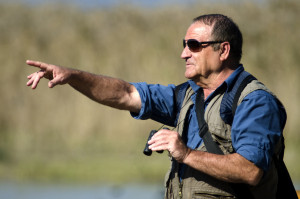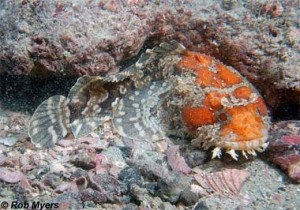 When you think of a pigeon, you probably think of park benches and cities, but pigeons can be found in rural areas, as well. In fact, the white-crowned pigeon nests nowhere else in the United States except for south Florida.
When you think of a pigeon, you probably think of park benches and cities, but pigeons can be found in rural areas, as well. In fact, the white-crowned pigeon nests nowhere else in the United States except for south Florida.
They can be found in the mangrove forests in the Everglades and south Florida. They will nest in the mangroves but spend a lot of time in the wooded areas, as well. They will lay one to three white eggs at time. Both the male and female will incubate the eggs. After hatching, the baby pigeons will leave the nest after 3 weeks. The parents both feed their young “pigeon milk.” Nesting usually occurs in July and August.
This pigeon’s body is a black/gray color with a white-capped head. They have iridescent green feathers on the back of their neck. They are around 13-14 inches in size. The oldest recorded white-crown pigeon was 14 years, 5 months old.
The pigeons are known to move more inland during the day to feed on fruit from the Poisonwood tree. They also eat strangler fig, pigeon plum, mastic, sea grape, seeds, insects, and other tropical fruits.
This pigeon can be easily spotted perching in trees. Unlike many “city” pigeons, they don’t spend much time on the ground. In the Everglades, they can be seen around Nine-Mile Pond, Snake Bight Trailhead, Eco Pond, and Bear Lake Road. Their population. There’s about 7,500 pairs of this pigeon living in Florida.
Along with Florida, this bird can also be found in the Caribbean and parts of Central America.
There is believed to be a global population of 550,000 of this bird. In 2014, they were on risk of becoming threatened or endangered. They are protected in Florida but are still hunted for food in the Caribbean. When mangrove forests are lost due to hurricanes, their habitat is compromised, which is a concern.
If you’re a bird watcher of just a fan of birds, the Everglades is the ideal place to see so many different species, including the white-crowned pigeon. Come explore the Everglades by airboat on a ride with Captain Mitch. Captain Mitch’s Airboat Tours give you a fun and exciting glimpse of the Everglades. To book an airboat ride, click here or call 800-368-0065.
 Outside of Florida, people are often surprised to hear that bears are wandering the streets in this state, but they are! This state is full of many different species. In fact, earlier this year a bear bit a man in the face in a neighborhood in Naples, Florida, which is not to far away from the Everglades. Black bears are the kind people will spot in the Everglades and south Florida. While in the Everglades, there is a chance you will catch a site of a bear; they can be spotted in forested sloughs and oak scrub.
Outside of Florida, people are often surprised to hear that bears are wandering the streets in this state, but they are! This state is full of many different species. In fact, earlier this year a bear bit a man in the face in a neighborhood in Naples, Florida, which is not to far away from the Everglades. Black bears are the kind people will spot in the Everglades and south Florida. While in the Everglades, there is a chance you will catch a site of a bear; they can be spotted in forested sloughs and oak scrub. There are numerous species of birds that can be found in the Everglades. At times in the winter, the sight of these birds can look like a scene out of the famous film, “The Birds.” Why? Well, birds migrate down to the Everglades for the winter so hundreds of birds are flying and gathering in the area. For this article, we wanted to focus on one bird so calls the Everglades its home: the wood duck.
There are numerous species of birds that can be found in the Everglades. At times in the winter, the sight of these birds can look like a scene out of the famous film, “The Birds.” Why? Well, birds migrate down to the Everglades for the winter so hundreds of birds are flying and gathering in the area. For this article, we wanted to focus on one bird so calls the Everglades its home: the wood duck. Did you know that one third of the Everglades is covered by water? It’s true! This makes it an ideal place for visitors and anglers to go fishing. There are many species of fish found in the waterways of the Everglades, but snapper, sea trout, redfish, bass, and bluegill are known to be abundant in this area.
Did you know that one third of the Everglades is covered by water? It’s true! This makes it an ideal place for visitors and anglers to go fishing. There are many species of fish found in the waterways of the Everglades, but snapper, sea trout, redfish, bass, and bluegill are known to be abundant in this area. Love to fish? The Everglades is a great spot to do it, since one-third of this place is covered by water! Throughout the park, there are many acres of shallow water flats, mangrove keys, and channels that make great spots to fish! However, fishing from the shore is limited. In the state of Florida, there are specific freshwater and saltwater licenses and regulations to follow. For important fishing information, click
Love to fish? The Everglades is a great spot to do it, since one-third of this place is covered by water! Throughout the park, there are many acres of shallow water flats, mangrove keys, and channels that make great spots to fish! However, fishing from the shore is limited. In the state of Florida, there are specific freshwater and saltwater licenses and regulations to follow. For important fishing information, click  There are around 300 different species of fish swimming in the waters of the Everglades National Park. Some of them look straight out of pre-historic times, like the Gulf toadfish. These fish make their presence know. They’re one of the few fish out there that can make sounds that humans can actually hear. Read the list below for some more interesting facts on this fish:
There are around 300 different species of fish swimming in the waters of the Everglades National Park. Some of them look straight out of pre-historic times, like the Gulf toadfish. These fish make their presence know. They’re one of the few fish out there that can make sounds that humans can actually hear. Read the list below for some more interesting facts on this fish: Did you know you can go fishing in the Everglades? You can! Since one-third of the Everglades is water covered, it makes sense that there are plenty of places where fishing would be ideal! In the Park, anglers have the opportunity to catch a variety of fish, including: snapper, redfish, bass, sea trout, and bluegill. Being a national park and in the state of Florida, people must be aware and abide by local fishing information.
Did you know you can go fishing in the Everglades? You can! Since one-third of the Everglades is water covered, it makes sense that there are plenty of places where fishing would be ideal! In the Park, anglers have the opportunity to catch a variety of fish, including: snapper, redfish, bass, sea trout, and bluegill. Being a national park and in the state of Florida, people must be aware and abide by local fishing information.





